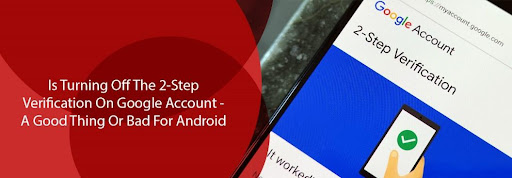Being careful on the internet is not just important; it is necessary, as most of our daily activities have shifted online. What’s more is that with new internet providers emerging every day and the global population surfing the internet at a frequency, greater than what they were doing five years ago, it’s no surprise that users worry about their digital security getting compromised. This is why utilizing the 2-Step Verification by Google is not a bad idea at all, as it allows users to add an extra layer of protection to their Google accounts.
What Is the 2-Factor Authentication Method (2FA)?
The 2-Factor Authentication Method refers to the two different levels of authentication, that are required for any user to log in to their online accounts. Generally, the user is first asked for the password, to ensure that the password is something difficult yet memorable to make it safe.
After the password is entered, the user is then asked for another type of verification if they want to access their account. This could range from sending a code via SMS, fingerprint/facial recognition, or verifying the push notification, to name a few. The idea behind 2FA is that anyone may get a hold of a user’s password but only the legit user will be able to access the next level of authentication.
Why the 2-Factor Authentication Method is not considered reliable?
While there are countless benefits of switching on the 2-Factor Authentication, there are several risks associated with turning on the feature as well. You will find so many articles on the internet, which emphasize the benefits of this particular feature but none focusing on the risk factor of this feature.
The 2-Factor Authentication is a fantastic security tool, but it’s not infallible. Users can still have their Google Accounts compromised if they don’t take care of their online security as much as possible. I.T. experts state that the standard password used to sign in to our accounts is no longer enough to keep users’ data safe and protected. Especially when users may be using the same password for their different accounts. That’s where the 2FA comes in handy as it is one of the many ways of securing online profiles from hackers. Yet users should still be aware that the 2-Factor Authentication still has the potential for a digital breach.
Bringing Forth Some New Risks
When users make a new email address, they are asked for a backup email and phone number. Although most users provide backup. But if these are left unattended for a long time, any hacker could have access to the passcode. Because of this, a user may have problems accessing their Google Account, as they don’t have access to back-up.
On the other hand, another way that exposes the risk of the 2-Factor Authentication Method is a password change in an old email account. A user may have changed their password to a new one, only to find that they can lose their online account. In such a case, it is important to upgrade their 2FA so that they don’t risk losing access.
Consequently, if users make use of a USB for security purposes, then hackers can replace it with a duplicate, which could provide access to their account and steal confidential information before the user realizes that they have been hacked and their sensitive data is exposed.
Other Risks Associated with 2FA
Among the countless risks that are associated with 2FA, one is sim-swapping, which may not involve a hacker physically taking out a SIM and putting it in their device. Instead, the hacker may pretend to call from the network, gather important info about the user, and use 2FA to access the user’s account.
Another tactic is users come across suspicious websites that may seem harmless on the surface but are collecting data for misuse. Phishing websites are difficult to identify in comparison to phishing emails. One way to identify a phishing website is by its extension. Often the official website may end with a ‘.com’ extension whereas a phishing website may have the same address but ends in a ‘.co’ extension. Users can also recognize a shifty website by its overall design or the numerous spelling errors it may have. That’s why users are suggested to instantly leave that website before it endangers their device or online accounts.
Switching Off The 2-Step Verification On Google Account
There are some users, who want to disable the 2-factor authentication on their Google account. Let’s see the steps to turn the feature off. Go through the following steps to find out how this can be done in an Android smartphone. Open Settings on your smartphone device, then select Google, and then click on ‘Manage Your Google Account’. Next, click on the Security option, which will bring the option for 2-Step Verification. Google will again you to sign in to your Google Account. Sign in and switch off the 2FA by clicking on it.
Conclusion: Do Users Require the 2-Factor Authentication?
Although Google claims that account hacks have drastically reduced, ever since users started switching on the 2-Factor Authentication, by default. However, they can always decide to opt-out, if they don’t feel right about it. After all, at the end of the day, users need to stay alert and mindful of the various risks, which may come with enabling and disabling the 2FA, if one wants to avoid losing their Google Account.
If you wish to know more about latest internet plans and bundles, do check out BuyTVInternetPhone.











